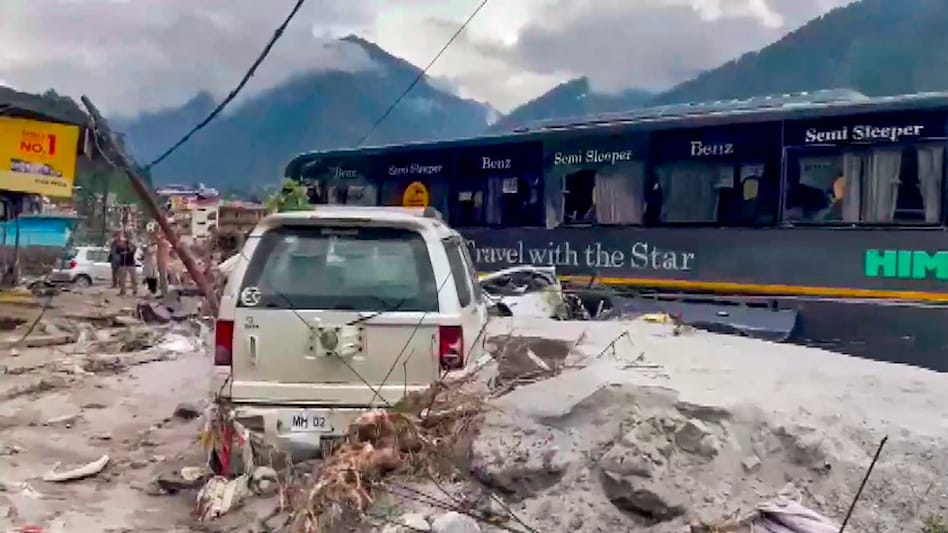 Rain-related incidents have claimed 77 lives between June 27 and August 1 in the state and caused losses amounting to Rs 655 crore, officials said.
Rain-related incidents have claimed 77 lives between June 27 and August 1 in the state and caused losses amounting to Rs 655 crore, officials said. 
 Rain-related incidents have claimed 77 lives between June 27 and August 1 in the state and caused losses amounting to Rs 655 crore, officials said.
Rain-related incidents have claimed 77 lives between June 27 and August 1 in the state and caused losses amounting to Rs 655 crore, officials said. A cloudburst in Samej Khad of Himachal Pradesh’s Hamirpur district has left nine members of this 11-member family missing, with only 42-year-old Ashok Kumar Kedarta and his six-year-old step-nephew Monu surviving.
Houses and several other structures in the village were demolished. The five cloudbursts that affected Kullu, Mandi and Shimla, left at least 50 people missing and eight bodies have been recovered so far in Kullu and Mandi.
Kedarta had gone out to meet a relative when the tragedy struck. Now, he has very little hope of finding his family alive. He himself and one Monu, who was staying in a nearby village, constitute the only surviving members of his immediate family.
The cloudburst also claimed lives other villagers. No missing person has been found after 72 hours of rescue operations.
Shimla SP Sanjeev Gandhi said though some mutilated body parts have been recovered, it was not certain that they belonged to any of the missing persons.
Flash floods and landslides due to cloudbursts and heavy rains have led to the closure of 114 roads in Himachal Pradesh, while the weather department warned that heavy showers would continue in the state till August 7.
Of the roads closed for vehicular traffic, 36 are in Mandi, 34 in Kullu, 27 in Shimla, eight in Lahaul and Spiti, seven in Kangra, and two in Kinnaur district, according to the state emergency operation centre.
The Himachal Roads Transport Corporation has suspended its bus services on 82 routes, an official said.
The local weather office has issued a "yellow" alert for heavy rains till August 7.
Rain-related incidents have claimed 77 lives between June 27 and August 1 in the state and caused losses amounting to Rs 655 crore, officials said.
The hunt for 45 people, who went missing after the cloudbursts, resumed on August 3 morning with 410 rescuers from teams of the Army, NDRF, SDRF, ITBP, CISF, Himachal Pradesh Police and home guards involved in the hunt with the help of drones.
“Cloudbursts usually occur between 1,000 to 3,000 meters above mean sea level due to the upward movement of air and condensation within clouds,” says Suresh Attri, principal scientist at the Department of Science, Technology, and Environment of Himachal Pradesh. “These events are clearly linked with climate change caused by global warming.”
He added that climate change causes an increase in the frequency and intensity of cloudbursts due to increased atmospheric moisture and changed weather patterns. Higher temperatures mean more evaporation, which in turn, means a greater amount of moisture in the atmosphere and more intense rainfall.
Cloudbursts have the following hallmarks: instantaneous and strong rainfall of more than 100 mm per hour, often affecting an area of 20-30 square kilometers in area.